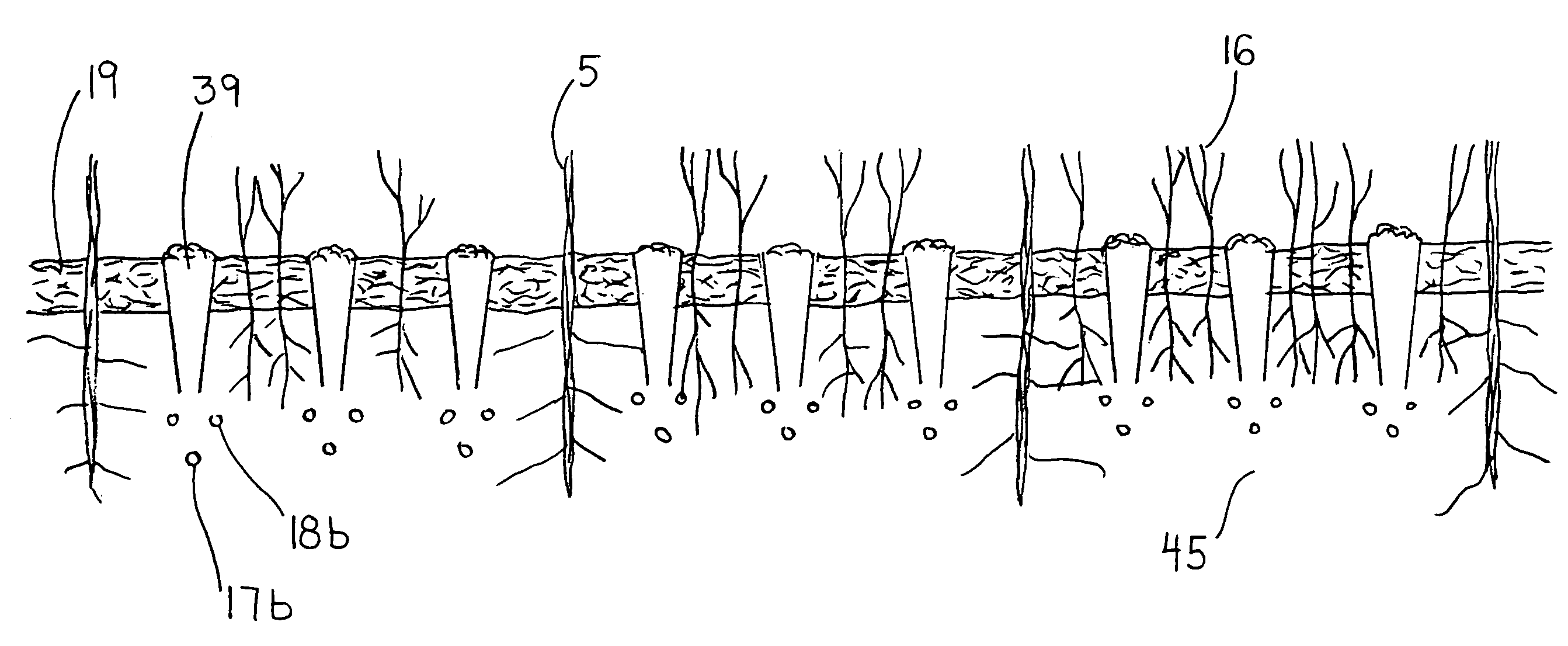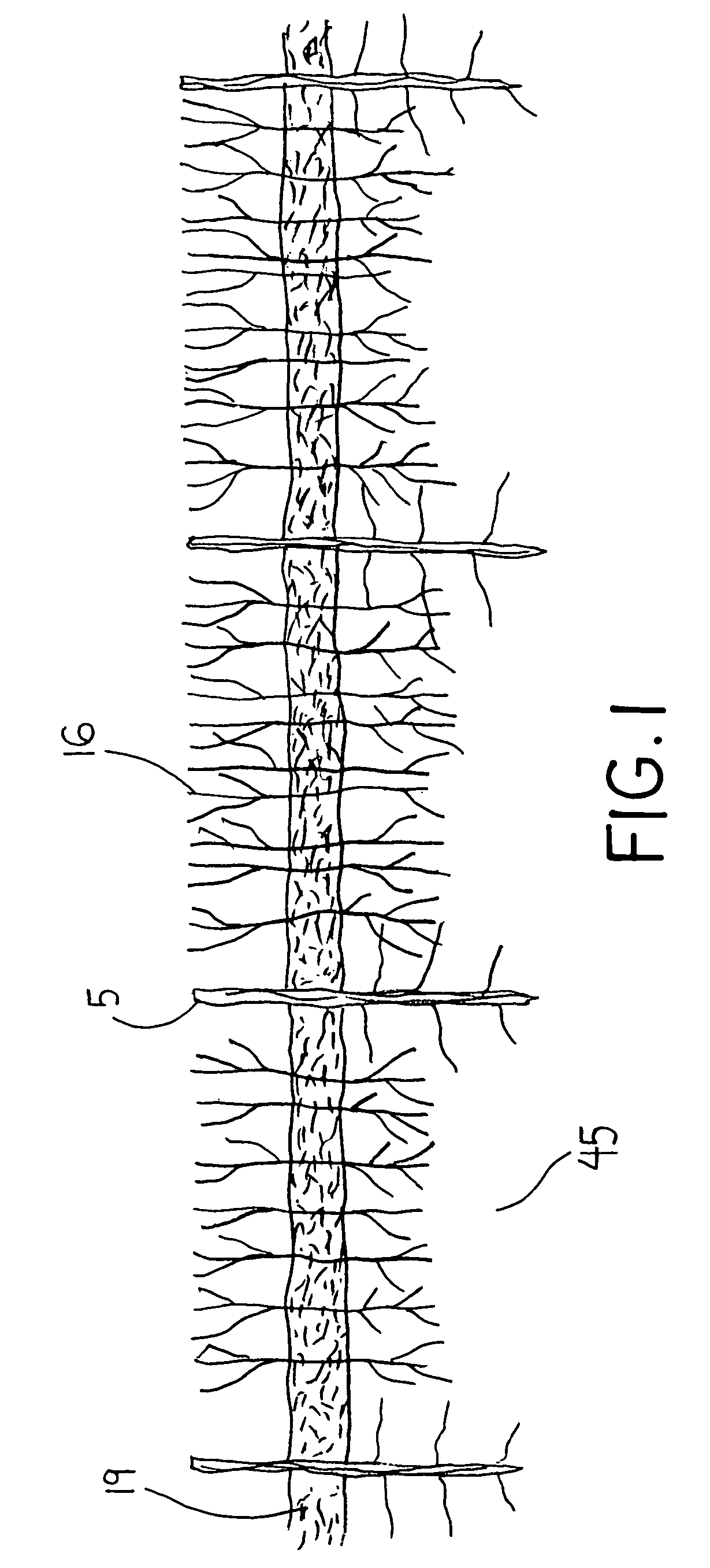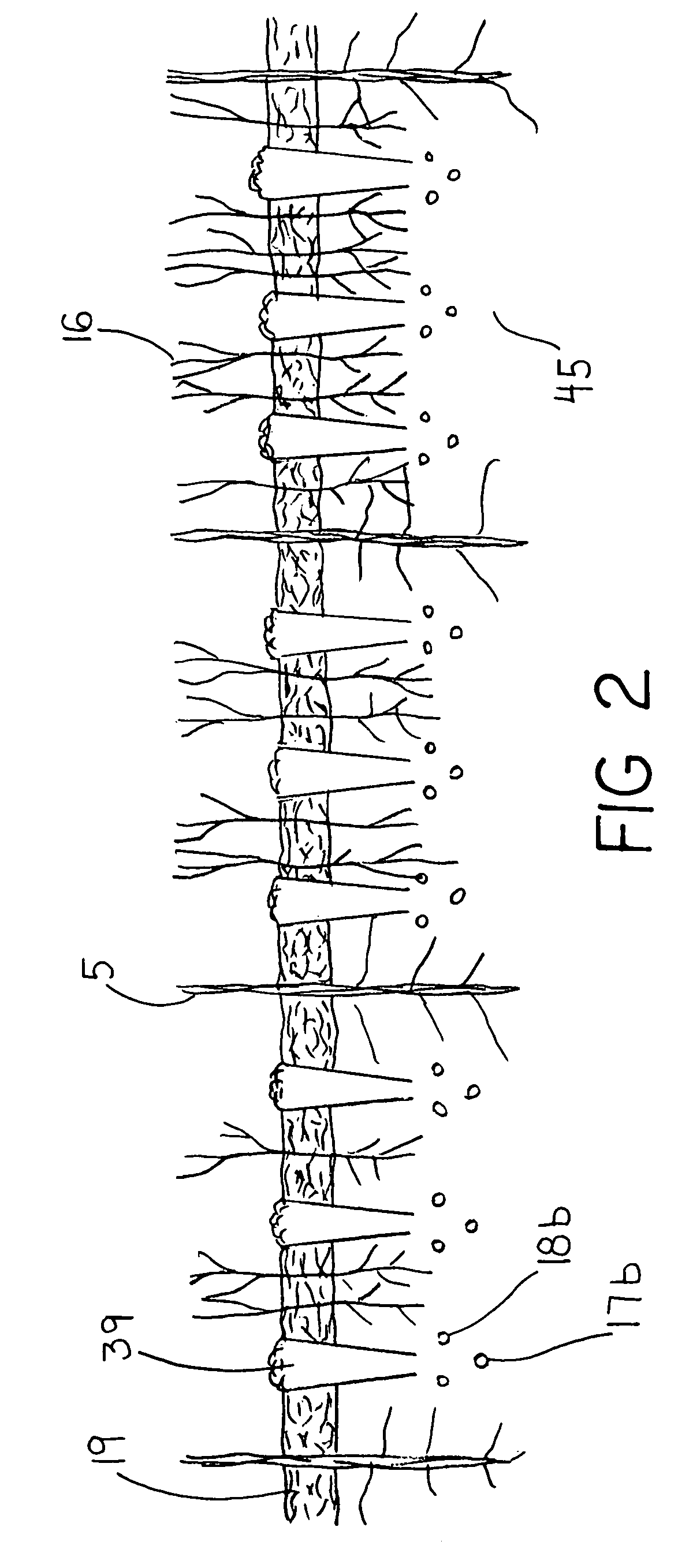Combined intercropping and mulching method
a mulching and intercropping technology, applied in the field of combined intercropping and mulching to commercial field crops, can solve the problem that insects cannot be eaten from one side, and achieve the effect of reducing the need for artificial chemical herbicides
- Summary
- Abstract
- Description
- Claims
- Application Information
AI Technical Summary
Benefits of technology
Problems solved by technology
Method used
Image
Examples
case canada corporation
[0100
[0101]450 Sherman Ave.
[0102]Hamilton, Ontario L8N, 4C5 Canada
[0103]or
[0104]Case Corporation
[0105]700 State Street
[0106]Racine, Wis. 53404
[0107]The following annuals are also satisfactory for providing combination mulch 20 and combination green manure 44 for the following spring intercropped planting:
[0108](a) Austrian peas, which are seeded in late summer or fall in well-drained soils, and flourish in warmer climates.
[0109](b) Hairy vetch, which is seeded in late summer or fall, with 1-2 pounds of seeds per 1,200 square feet. Hairy vetch tolerates moderate drainage, grows well in northern climates and is a good source of soluble nitrogen soil compounds.
[0110](c) Soybeans, which are seeded in spring or summer, at 2-31b. of seed per 1,000 square feet. Soybeans tolerate poor drainage well.
[0111](d) Annual rye grass which is seeded in spring at approximately one to two pounds of seed per 1,000 square feet. Annual rye grass tolerates a wide range of soils, provides a quickly placed ...
PUM
 Login to View More
Login to View More Abstract
Description
Claims
Application Information
 Login to View More
Login to View More - R&D
- Intellectual Property
- Life Sciences
- Materials
- Tech Scout
- Unparalleled Data Quality
- Higher Quality Content
- 60% Fewer Hallucinations
Browse by: Latest US Patents, China's latest patents, Technical Efficacy Thesaurus, Application Domain, Technology Topic, Popular Technical Reports.
© 2025 PatSnap. All rights reserved.Legal|Privacy policy|Modern Slavery Act Transparency Statement|Sitemap|About US| Contact US: help@patsnap.com



